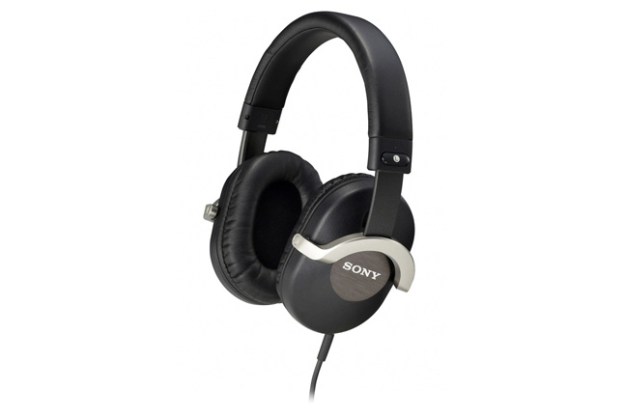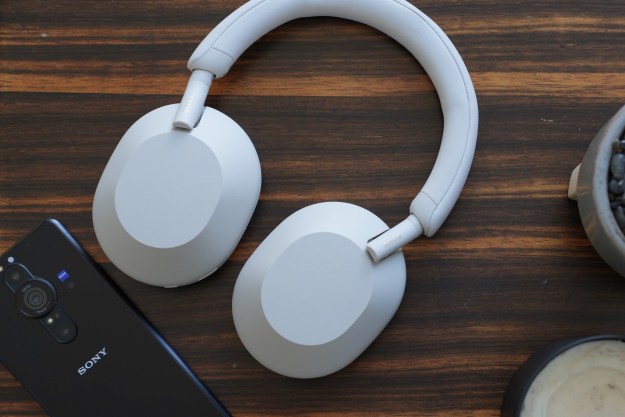
“The Sony ZX700 headphones seem like they’re meant to appeal to audiophiles and studio pros, but with such a short cord, sterile sound and no ¼-inch adapter included, we doubt they will end up being the top choice of either.”
- Extremely comfortable
- Terrific passive noise isolation
- Solid build quality
- Sterile sound
- No accessories included
Sony recently released the latest additions to its family of headphone products: the ZX series. The new series is comprised of four different models that range in price (and size) from $19.99 to $119.99. Though the much pricier MDR-Z1000 look as if they belong to the ZX line-up, it is actually the MDR-ZX700 that Sony claims is the top of the line for this new series. Sony seems to be aiming the ZX700 at audiophiles and studio professionals alike, claiming the ZX700 are “…perfect for use in and out of the studio.” If that claim holds true, then the ZX700 have the potential to be one of the better values available in studio quality headphones. In this review, we’ll take a close look and listen to the ZX700 and find out if they truly are studio ready.
 Out of the box
Out of the box
Sony didn’t put a whole lot into the packaging of the ZX700, though the box is pleasant to look at and a whole lot easier to open then a blasted blister pack — no shredded fingers getting at these cans, thankfully. The simple, hinged box contains the headphones, which we found fit into a cardboard cut-out. Along with the headphones we found…two pieces of paper. Yeah…that’s it. Unlike the Sennheiser HD448, no storage pouch, extension cable or ¼”-inch adapter are included.
Features and design
Sony’s supra-aural, closed-back MDR-ZX700 headphones are attractive in a simple, understated, almost retro sort of way. The matte-black, plastic ear-cups are oval in shape with a circular name badge that Sony attempted to make look like wood. Unfortunately, the effect is lost to the highly reflective nature of the badge’s finish.
The inner portions of the ear-cups are lined with a padded, soft, black urethane. The same goes for the headband, which is dominated with the soft material. The adjustable inner portion of the headband is made of the same plastic as the ear-cup backing. The ear cups attach to the headband via a wavy, U-shaped bracket that is matte-silver in color.
Inside the ear-cup is a 50mm driver, large enough to generate some big bass if designed to do so. Connecting the headphones to your favorite source is a reasonably thick cord that stretches to just under four feet long. Maybe four feet is the new three feet for headphone cords? If so, we like it. For portable media players, three feet never seems long enough and six feet always seems unnecessarily long.
The ZX700 do not fold down. There is just enough vertical and horizontal play with the ear cups to allow the headphones to fit a range of different head sizes and shapes.
As previously mentioned, the ZX700 don’t come with an extension cable or a ¼-inch adapter. Perhaps Sony means these are just “studio style” headphones, because without a ¼-inch adapter, they aren’t going to work in most studio settings. Sure, quality adapters only cost a few dollars, but at this price point, we expect to see them thrown in.

Performance
We tested the ZX700 with our dutiful headphone test bench comprised of an iPhone 4, iPod Touch, Marantz SR6005 A/V receiver, Pioneer turntable with Ortofon OM5E cartridge, Bellari phono pre-amp, HeadRoom micro DAC and HeadRoom micro amp.
We did the bulk of our listening tests using our iPhone because, contrary to Sony’s studio-oriented marketing approach with these headphones, they seem best suited for use with a portable media player. With a cord this short and no ¼-inch adapter included, it just doesn’t seem likely that the ZX700 would be at home in a recording studio, mixing room or DJ booth.

Also, the ZX700 do a remarkable job of providing passive noise isolation. Those looking for a quality set of headphones that will successfully drown out outside noise without having to snack on batteries might want to consider these cans.
In terms of audio performance, we think our opinion of the ZX700 might best be expressed in terms of what they don’t do, for better or worse.
First, the good: The ZX700 do not produce artificially bright high frequencies (which, as anyone who reads our headphone reviews knows, is our chief pet peeve). They are capable of reproducing all the treble we’d need to hear and avoid screeching at their listener even when the source material is really aggressive in the top end.
They also avoid producing unnaturally big bass for the sake of showing off how much bass they can put out. As a result, they are mostly balanced in the bass and mid-bass areas, save a little unwanted resonance around 90Hz to 100Hz that we found didn’t get in the way all that often.
As for midrange characteristics, the ZX700 are thankfully not making vocals sound as if they are being piped through an empty beer can. We’d describe the midrange as slightly laid back and uncolored. Listening to a recording of Seal singing “Stand By Me” was one of the more enjoyable moments we had while listening to the ZX700.
For the negatives: We found that these headphones don’t produce sound with much texture. We used a couple of recordings where the Fender Jazz Bass being used produces a distinct sort of growl. On a really good set of
The ZX700 also sound pretty two dimensional. There isn’t much depth to the sound stage and instrumentation seems to come from either the left or the right, with not a lot in between.

Using a dedicated DAC and headphone amplifier brought a lot more out of the ZX700 than our iPhone was capable of delivering, but the distinction was less apparent than with other headphones we’ve tested in this price class.
Conclusion
The ZX700 seem like they’re meant to appeal to audiophiles and studio pros, but with such a short cord, sterile sound and no ¼-inch adapter included, we doubt they will end up being the top choice of either. While well built, extremely comfortable and capable of some impressive passive noise isolation, we think that the ZX700 need to have a little more character to the sound they produce considering the competition in this price segment.
Highs:
- Extremely comfortable
- Terrific passive noise isolation
- Solid build quality
Lows:
- Sterile sound
- No accessories included
Editors' Recommendations
- Sony’s ULT Power Sound headphones and speakers go big on powerful bass
- Best Bose 700 deals: Save $151 on the wireless headphones today
- Best Sony headphone deals: Save on top headphones and earbuds
- Updating our Sony WF-1000XM5 review
- Sony updates WH-1000XM5 with head-tracked spatial audio and better multipoint





